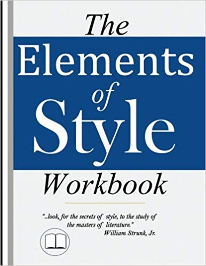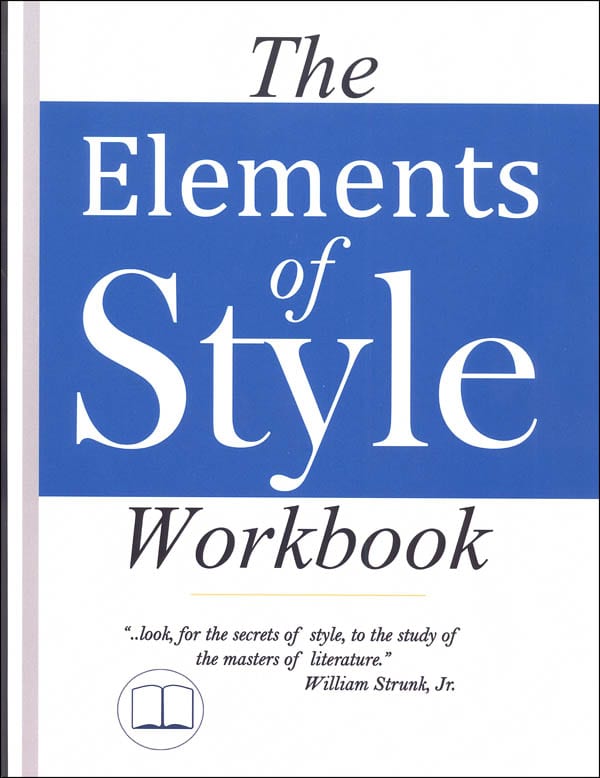The Elements of Style by William Strunk, Jr., first published in 1920, continues to serve modern audiences as a brief course for improving writing skills. Current editions of that book lack exercises for practicing skills, and that is remedied in the new The Elements of Style Workbook from Brookdale House. But improvements go far beyond that.
The Elements of Style Workbook (TESW) repeats the essential content of the original book (with some modifications) while adding exercises and answer keys. The original book presents content in two sections, one on usage, and the other on principles of composition. TESW adds a third section titled “The Secrets of Style.” There we find extensive instruction and practice for analyzing and imitating well-known authors, writing with dialog, and learning to write with different styles depending upon the author’s purpose. This third section draws upon material from other resources that are in the public domain. TESW omits a few topics from the original book that the publisher decided were less important—topics such as commonly misspelled words and syllabication rules.
The entire TESW is 213 pages in length. The first 22 pages address grammar and usage issues, and the next two sections on composition and style form the bulk of the book. Space is included within all three sections for students to write directly in the book. However, some assignments might require more space, and students might want to write lengthier compositions on a computer rather than by hand.
Answer keys follow immediately after each exercise when answers are predictable, so TESW will work best for self-disciplined students who will resist the temptation to check the answer key before coming up with their own answers.
Excerpts from literary works by authors such as Charles Dickens and Ralph Waldo Emerson, excerpts from other sources such as “Chief Joseph’s Surrender Speech” (1877), and an entire short story by Anton Chekov are used in the third section of this book as models for imitation, as sources to be analyzed, or as resource material for exercises. The idea of imitation is used occasionally in other places within TESW. For example, following the lesson on dangling and misplaced modifiers in the first section, an exercise has students write their own sentences based upon models of properly constructed sentences.
The exercises and instruction are often challenging than one finds in the average high school English textbook. For example, the sentence-combining exercises present from two to seven ideas that are to be combined into a single sentence. Then students are asked to write six variations of that one sentence.
Students will occasionally encounter lines such as, “A noun in apposition may come between the antecedent and relative because in such a combination, no real ambiguity can arise” (p. 105). However, the attentive student should generally have no trouble understanding the information when read within its context.
A common lesson layout in the third section is the presentation of a model, with brief instructions and a three-step exercise such as this one on page 156:
Step 1: Read the model closely. Copy the model on the lines provided. By simply rewriting the model, you will become more intimately familiar with the style of the author.
Step 2: To further evaluate the author’s style, write a few notes to help you remember the content of the passage. When you are finished, put away the original model. Using your notes, rewrite the passage, maintaining the author’s original style.
Step 3: Change the topic and create your own passage imitating the style of the original passage.
Later exercises have students rewrite the models to practice changing the style of writing. One exercise has students rewrite a flowery passage from “The True Honor of Man” by Dr. Blair, changing what the text refers to as the copious style to a precise style. A checklist on page 201 is frequently used by students to self-check their composition work.
This use of models and imitation reflects a classical approach to composition, and some techniques are similar to those used in IEW’s Teaching Writing Structure and Style.
The Elements of Style Workbook should be an excellent option as a year-long course for high school students to develop and polish their writing skills. While the original The Elements of Style book has been useful, adding exercises and extensively expanding work on composition skills makes this new version far more practical.









